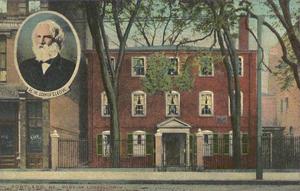Children learn through example and through what they observe; they will therefore learn their gender roles and behaviour through the books that they read as well as through watching their parents and other adults of the same sex. This research looks at how stories children read can affect their attitude to gender.
Child Development and Gender Roles
At a young age, children are still learning about male and female characteristics and the books they read will have an influence on this part of their learning. Helen Bee in The Developing Child suggests three stages of Gender identity:
- Gender identity 1- 3 years (ability to correctly label the self and others as male or female.
- Gender stability: 3-4 years (Awareness that gender stays the same throughout life i.e. when you grow up you will be a mummy or daddy.
- Gender constancy: 5-6 years (Awareness that gender stays constant even when sex role behaviours and expectations are violated (e.g. man wearing a dress)
Gender roles are learned in society through experience, through interaction with others and through what children observe and read.
Gender and the Developing Child
Gender refers to the behaviour attached to the different sexes and the quality of care children receive in early education settings depend on a number of factors including “equal opportunities.” Pamela Minet in Child Care and Development suggests
“Boys should not be expected to behave in different ways from girls and both sexes should be given the same opportunities to play with the full range of toys and to take part in all types of activities.”
How Parents Influence Gender Identity
Parents and teachers play a role in helping a child learn about gender through toy selection (toys based on gender), play(parents, especially fathers often engage in more “gender appropriate play”), chores (gender discrimination can often be seen in chores i.e. girls might do more household chores than boys) and through the work they’re set at school.
The affect Gender Discrimination Might Have on the Developing Child
A child’s attitude to gender will affect his/her attitude when they are older. The wrong impression might limit boys from being nurses, child care workers or cooks and stop girls from becoming air-line pilots or brick layers. Ultimately this means they may not achieve their full potential.
This type of discrimination can also have a big affect on children and their families. They may choose not to play with certain toys or will be discouraged from learning certain life skills because it is not considered to be appropriate for their gender. For instance boys may not choose to sew or knit, a girl might be told she can’t join a football team.
Being discriminated against could damage the child’s self-confidence. They might grow up with an “inferior” view of themselves and may refuse to try new activities because it is not expected of their gender. In turn this could damage their social relationships in the future.
Within the family setting, boys might not expect to help with housework, doing dishes or the cleaning up if they are encouraged to think this is not appropriate for their gender.
The Role Parents and Carers Play in Teaching Children about Gender
Because children learn through example and through mimicking same-gender adults, parents therefore have a big role to play in teaching children about gender.
The Sex Discrimination Act of 1974 protects people from sex discrimination when applying for jobs, in education, when renting a home and in how they are treated at work.
Because society now seems to accept that girls can also share the traditional male active/assertive/dominant roles and boys can also share the traditional female caring/cooking/sensitive roles, early education should contain a balance of traditional and non traditional roles for both boys and girls.
Sources
- Bee Helen. The Developing Child. Addison-Wesley Educational Publishers. 1997.
- Tassoni Penny, Beith Kate, Eldridge Harriet, Gough Alan. Diploma Child Care and Education. Heinemann. 2002.
- Minett Pamela Child Care & Development third edition. John Murray Publishers. 1994.




